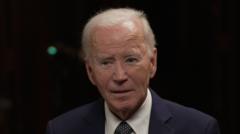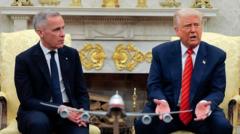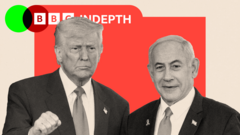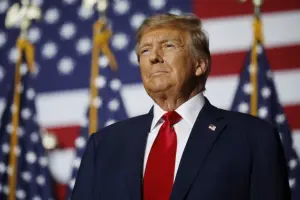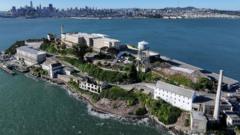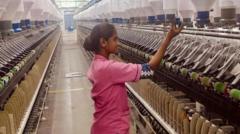In recent moves regarding tariffs, the Trump administration has seen a divergence in strategy with key players like Treasury Secretary Scott Bessent adopting a more conciliatory approach while others like Peter Navarro take a harder line. The evolving power dynamics reflect a complex and often confusing trade policy landscape.
The Tariff Tumult: How Trump's Shifted Team is Navigating Trade Policy
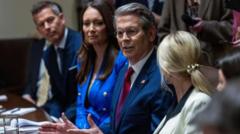
The Tariff Tumult: How Trump's Shifted Team is Navigating Trade Policy
As the Trump administration continues to pivot on tariff strategies, a closer look reveals a split dynamic within the White House, showcasing a battle between hard-line and moderate voices.
In the whirlwind moments following President Donald Trump's unexpected decision to pause several extensive "reciprocal" tariffs, one figure emerged as the face of the administration's policy shift: Treasury Secretary Scott Bessent. Addressing a multitude of reporters on 9 April, Bessent, a former hedge fund manager, characterized the pause as a demonstration of significant courage. His prominent role in the announcement contrasted sharply with the absence of his colleagues, Commerce Secretary Howard Lutnick and trade advisor Pete Navarro, both of whom are noted for their staunch positions on tariffs.
Experts suggest this change illustrates the shifting power dynamics within the White House and how it has averted an impending global trade conflict. William Alan Reinsch, a former leader of the National Foreign Trade Council, described Bessent as the "good cop," while Lutnick and Navarro took on the "bad cop" personas in the tariff drama. The nuances of this situation are further complicated by Trump's own approach, as he appeared to weigh public sentiments and market responses before making his decision.
According to media reports, it was Bessent who influenced Trump towards halting the tariffs, engaging in pivotal discussions both aboard Air Force One and in the Oval Office. His past skepticism about tariffs and deep expertise in the bond market allowed him to effectively convey to Trump the importance of market reactions.
As tumult brewed in the administration, two other critical figures in tariff negotiations faced their sidelining: US Trade Representative Jamieson Greer, who was engaged in testimony, and Navarro, known for his vocal media presence, both of whom added to the confusion surrounding the administration's tariff strategy. The chaotic communication style among officials sparked volatility in the markets, leading to concerns about inconsistent messaging.
Terry Haines from Pangaea Policy noted the administration's apparent strategy of diversifying its public spokespersons on tariff matters, which, while effective politically, contributed to market unease. Experts anticipate Bessent will take a more central role in guiding tariff discussions, providing a coherent public face for economic policy, while Lutnick focuses on negotiations and Navarro, alongside Greer and others, supports from the periphery. Analysts believe that a more streamlined approach to communication could enhance market stability moving forward, a development that businesses and investors urgently require.
Experts suggest this change illustrates the shifting power dynamics within the White House and how it has averted an impending global trade conflict. William Alan Reinsch, a former leader of the National Foreign Trade Council, described Bessent as the "good cop," while Lutnick and Navarro took on the "bad cop" personas in the tariff drama. The nuances of this situation are further complicated by Trump's own approach, as he appeared to weigh public sentiments and market responses before making his decision.
According to media reports, it was Bessent who influenced Trump towards halting the tariffs, engaging in pivotal discussions both aboard Air Force One and in the Oval Office. His past skepticism about tariffs and deep expertise in the bond market allowed him to effectively convey to Trump the importance of market reactions.
As tumult brewed in the administration, two other critical figures in tariff negotiations faced their sidelining: US Trade Representative Jamieson Greer, who was engaged in testimony, and Navarro, known for his vocal media presence, both of whom added to the confusion surrounding the administration's tariff strategy. The chaotic communication style among officials sparked volatility in the markets, leading to concerns about inconsistent messaging.
Terry Haines from Pangaea Policy noted the administration's apparent strategy of diversifying its public spokespersons on tariff matters, which, while effective politically, contributed to market unease. Experts anticipate Bessent will take a more central role in guiding tariff discussions, providing a coherent public face for economic policy, while Lutnick focuses on negotiations and Navarro, alongside Greer and others, supports from the periphery. Analysts believe that a more streamlined approach to communication could enhance market stability moving forward, a development that businesses and investors urgently require.

